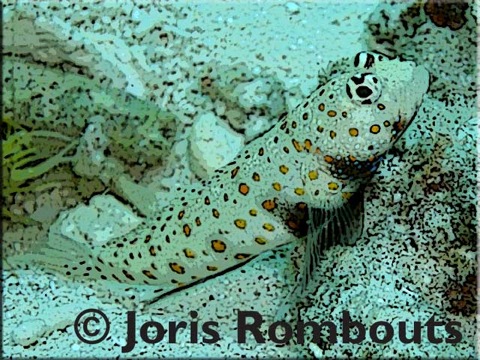- Check the sub-map for the specimen information files -
GOBIES - GOBIIDAE
Often confused with Blennies (Blenniidae), gobies have two dorsal fins instead of one long one. The goby family is the largest family of marine fishes with up to 1,600 species in 220 genera. Around five-hundred species inhabit the Indo-Pacific region, but there are certainly many who remain un-described. Some species inhabit silty reefs with stones or dead corals; others like the Gobiodon sp. inhabit healthy reefs with many Acropora and Pocillipora colony's. Most are carnivore and feed on tiny crustaceans. A few species feed on drifting plankton that passes just above the bottom. The so called "shrimp gobies" share a burrow with a snapping shrimp from the genus Alpheus. The nearly blind shrimp needs the gobies sharp eyes in case of danger. In return the goby can enjoy the hospitality of the shrimp and house in his self-made burrow. During the day the shrimp keeps on bringing out sand and rubble from the burrow like a bulldozer. While the goby hovers in front of their habitat and keeps an eye on the surroundings, the shrimp stays in contact with the goby by putting one of his long antennas against the tail or rear dorsal fin. In case of any danger, the goby warns the shrimp with a tail-twitch. The shrimp will go into the burrow first followed by the goby. Most species don't become longer than fifteen centimeters. The smallest is the Trimmaton nanus from the Chagos Archipel which is smaller than one centimeter. All females lay their eggs in a nest made by the male underneath a stone or in front of their burrow. Both will guard the egg mass till they hatch.
- Check the sub-map for the specimen information files -

